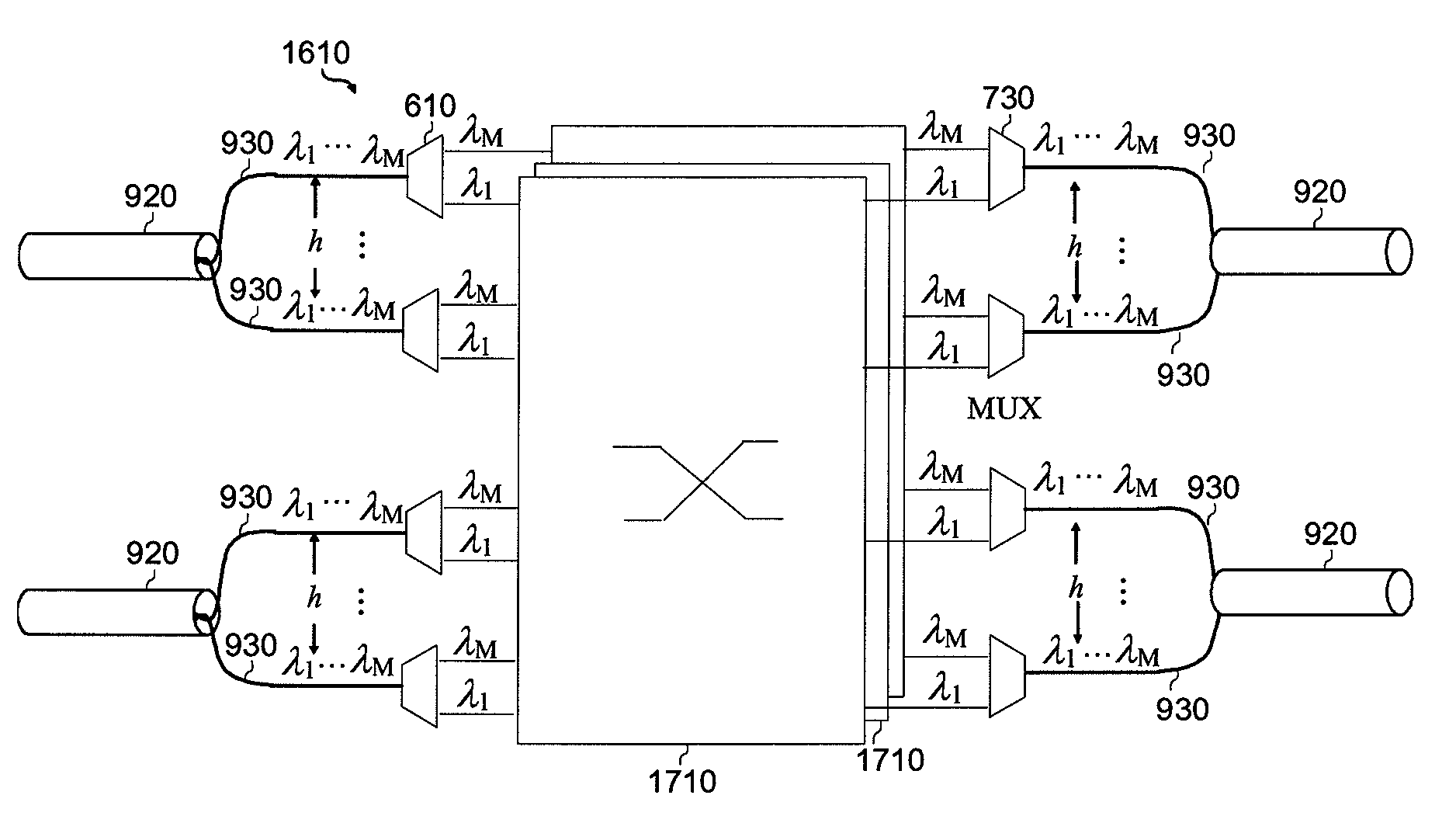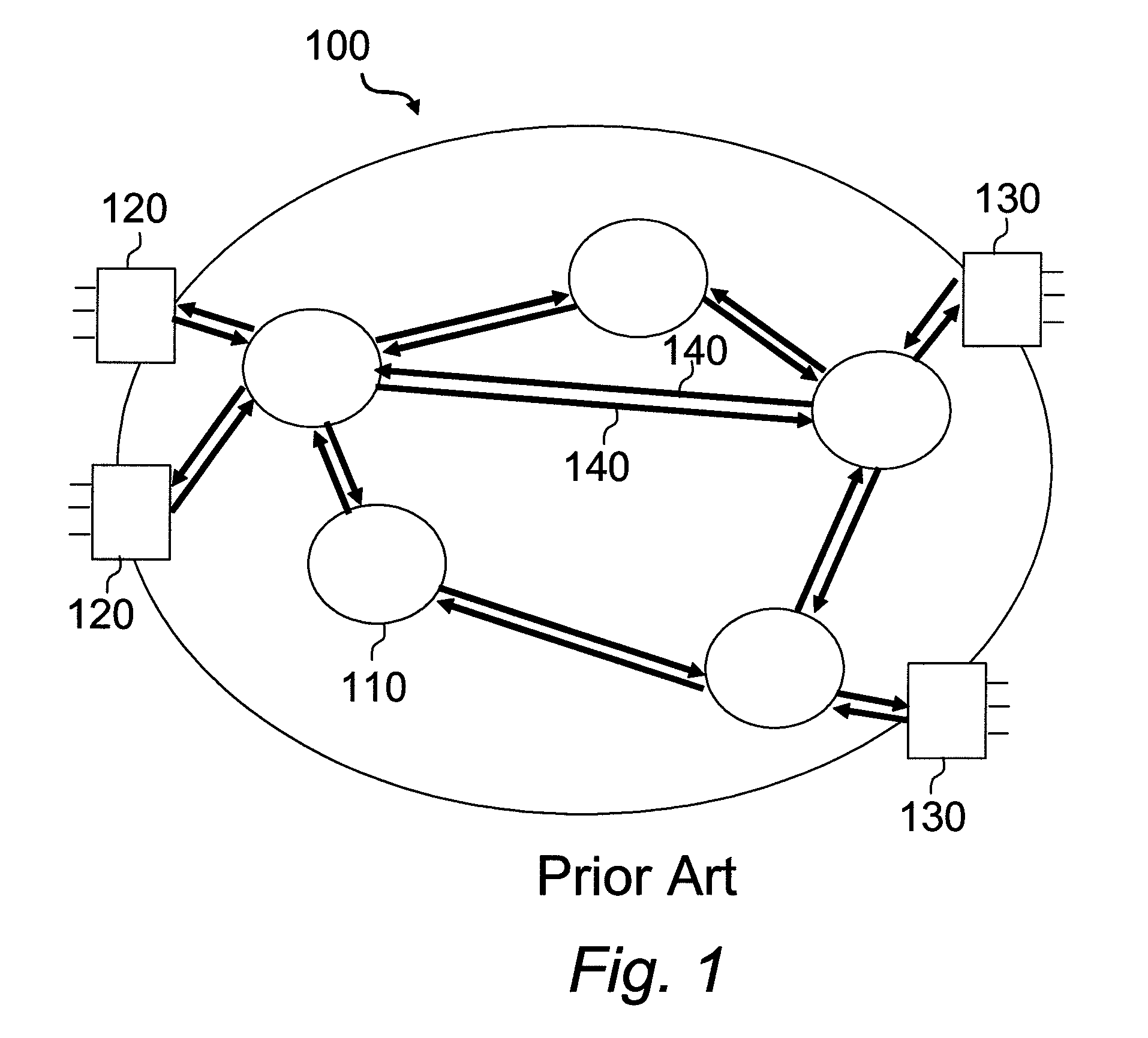Methods for non-wavelength-converting multi-lane optical switching
a multi-lane optical switching and wavelength conversion technology, applied in the field of optical networks, can solve the problems of increasing capacity, affecting the efficiency of statistical multiplexing, so as to reduce the need for wavelength conversion, control the latency, and fast and efficient wavelength scheduling
- Summary
- Abstract
- Description
- Claims
- Application Information
AI Technical Summary
Benefits of technology
Problems solved by technology
Method used
Image
Examples
Embodiment Construction
[0064]Refer now to the drawings wherein depicted elements are not necessarily shown to scale and wherein like or similar elements are designated by the same reference numeral through the several views.
[0065]Optical Burst Switching (OBS) networks rely on wavelength conversion to provide statistical multiplexing performance. The cost of wavelength converters will remain expensive in foreseeable future, making the cost to deploy OBS network prohibitively high. The methods described in this disclosure provide statistical multiplexing performance without using the expensive wavelength converters. By eliminating the need for wavelength converters, the present invention greatly reduces the cost for OBS deployment.
[0066]FIG. 1 shows an example of an optical burst switching network 100. The optical burst switching network 100 includes multiple electronic ingress edge routers 120, multiple optical core routers 110, and multiple electronic egress edge routers 130 connected by wavelength divisi...
PUM
 Login to View More
Login to View More Abstract
Description
Claims
Application Information
 Login to View More
Login to View More - R&D
- Intellectual Property
- Life Sciences
- Materials
- Tech Scout
- Unparalleled Data Quality
- Higher Quality Content
- 60% Fewer Hallucinations
Browse by: Latest US Patents, China's latest patents, Technical Efficacy Thesaurus, Application Domain, Technology Topic, Popular Technical Reports.
© 2025 PatSnap. All rights reserved.Legal|Privacy policy|Modern Slavery Act Transparency Statement|Sitemap|About US| Contact US: help@patsnap.com



